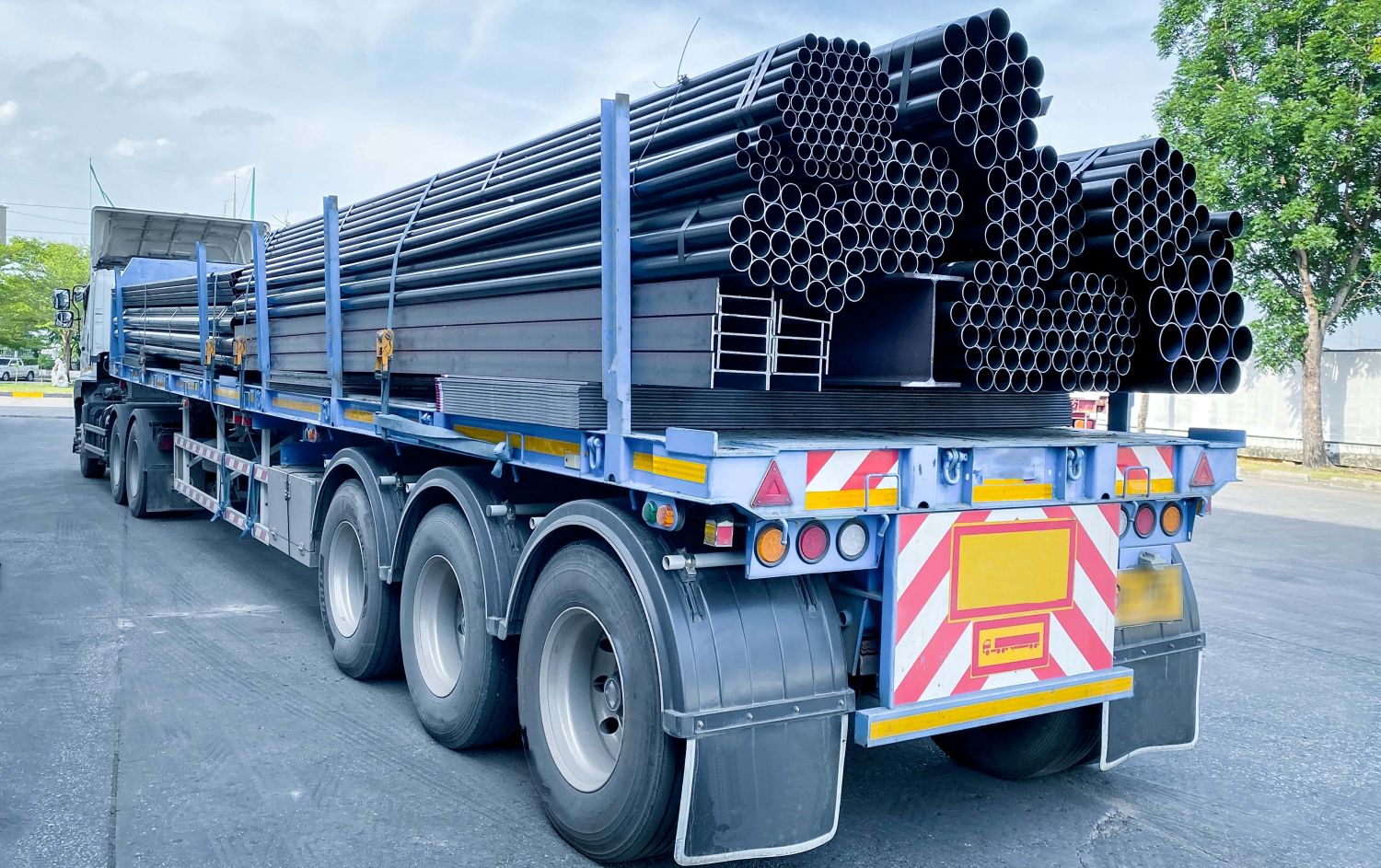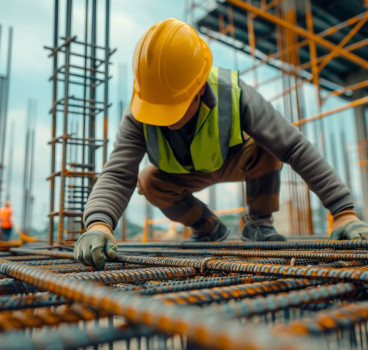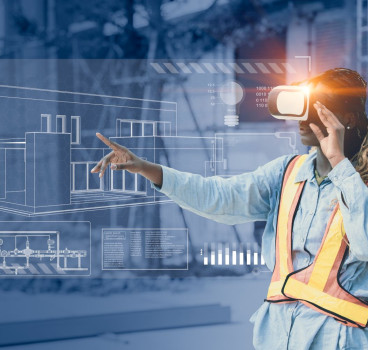Why construction needs Its own “Food Miles” label
Everyone understands the concept of “food miles.” The label was born from the environmental movement of the late 20th century and was designed to show how far food had travelled from farm to plate. It encouraged consumers to think differently about their purchasing choices, to favour local produce, and to question the hidden environmental cost of global supply chains. Now imagine applying that same logic to construction. Every steel beam, every pane of glass, every bag of cement has a journey. Materials are quarried, mined, milled, processed, packaged and transported across continents before ever reaching a site. Yet, unlike the food industry, the construction sector rarely quantifies or communicates that distance, writes John Ridgeway.
A “build miles” label could change that, making visible what is currently hidden and giving developers, architects and clients a tangible measure of the embodied carbon tied to logistics. It’s a deceptively simple concept that could have major consequences for how we design, source and build.
Transportation is one of the biggest yet most overlooked contributors to construction’s carbon footprint. Global construction supply chains are vast and fragmented with timber from Scandinavia, stone from India, aluminium from China, insulation from Germany. Even within a single project, materials might cross multiple borders before they arrive on site.
These journeys add up. A tonne of steel shipped halfway across the world has a very different carbon cost to the same tonne sourced regionally. Yet when embodied carbon is calculated, the transport element is often treated as a footnote, easily overshadowed by production emissions.
If the sector truly wants to achieve net zero, this gap in visibility must be addressed. “Build miles” could provide the missing link between environmental ambition and practical accountability, forcing everyone in the construction chain to ask - where did this come from, and what did it cost the planet to get here?
Lessons from the food industry
The food miles movement did not just raise awareness - it transformed supply chains. Supermarkets began labelling origins, local farmers found new markets and consumers developed a taste for provenance. Transparency drove behavioural change.
Construction could learn a great deal from that. A standardised way to communicate sourcing distance and transport-related emissions could reshape procurement decisions. Architects might specify materials that are geographically closer. Developers might prioritise suppliers that can demonstrate low-carbon logistics. Manufacturers might rethink how and where they produce goods.
Just as the food miles label made environmental responsibility part of the everyday shopping experience, a “build miles” indicator could make carbon literacy an everyday part of construction.
Measuring what matters
Of course, distance alone doesn’t tell the full story. Transport mode, efficiency and backloading all matter. Shipping a container of bricks 1,000 kilometres by rail may have a smaller footprint than trucking them 100 kilometres by diesel lorry. Similarly, materials transported by sea - though travelling farther - can sometimes be less carbon-intensive than short overland trips.
That’s why a “build miles” framework would need to be more sophisticated than a simple distance measure. It should account for emissions per tonne-kilometre, combining data from supply chains, logistics providers and embodied carbon assessments. A practical model already exists in frameworks like Environmental Product Declarations (EPDs) and Life Cycle Assessments (LCAs), but these remain complex and poorly understood outside sustainability specialists.
A more accessible “build miles” score could distil this complexity into something visual and immediate, simple enough to influence everyday decision-making without losing credibility.
Once such information is visible, behaviour changes. If developers could see at a glance that their façade panels had travelled 9,000 miles compared to an alternative at 400, the decision becomes not just ethical, but commercial. Shorter supply chains mean fewer risks, shorter lead times and often greater reliability.
Local sourcing could re-energise regional manufacturing. Quarries, brickworks and joineries that have lost out to cheaper imports could find new life supplying projects that prioritise low “build miles.” This shift could stimulate local economies and reduce vulnerability to global disruptions - a win-win for sustainability and resilience alike.
Moreover, as carbon pricing and ESG regulations evolve, projects with lower build miles could also become more financially attractive, offering measurable reductions in embodied emissions that help meet regulatory and investor requirements.
The cultural shift construction needs
For the past decade, construction has been rightly focused on operational efficiency - energy use, insulation and renewables. But as operational emissions fall, embodied carbon is taking centre stage. The materials we specify now account for the majority of a building’s lifetime emissions.
A “build miles” system would help bring embodied carbon into mainstream conversation. It would shift sustainability from the technical domain of consultants into the cultural consciousness of the industry. Site managers, quantity surveyors and clients could all participate in reducing carbon impact simply by asking - how far did this travel? Just as “farm to fork” reshaped our relationship with food, “source to site” could reshape our relationship with construction materials.
However, implementing a “build miles” system wouldn’t be easy. Construction supply chains are notoriously complex, often involving multiple subcontractors and opaque procurement routes. Many suppliers lack the digital infrastructure to track logistics emissions accurately. Standardising such data across regions and materials would require industry-wide collaboration and potentially government-backed frameworks.

Yet the foundations already exist. The UK’s push for transparent carbon reporting through initiatives like the Carbon Reduction Code for the Built Environment and BS EN 15978 sets the stage. The European Union’s Level(s) framework for sustainable buildings is moving in the same direction. In time, these could converge into a shared metric that includes the geographical dimension of material sourcing.
With digital twins, blockchain tracking and AI-based supply chain analytics becoming more commonplace, capturing “build miles” data is no longer technically impossible - it’s a question of will.
Building closer to home
The globalisation of construction has brought many efficiencies, but it has also distanced us - literally and figuratively - from the origins of what we build with. A “build miles” approach could help close that gap, reconnecting design intent with environmental consequence.
Imagine a future tender where material options are listed not only by cost and quality, but by distance and transport carbon. Architects might take pride in specifying “low-mile” designs and clients could market developments built with locally sourced materials as part of their ESG credentials.
The impact would go beyond sustainability metrics. It would change how we value craftsmanship, proximity and resource stewardship. It would make local materials fashionable again and not just for aesthetic or nostalgic reasons, but for measurable environmental gain.
At first glance, a “build miles” label might sound symbolic - another eco-tag in a crowded sustainability conversation. But like “food miles” before it, the symbolism matters. It’s a signal of intent, a cultural nudge that can reshape habits across an entire industry.
Construction doesn’t need to reinvent sustainability - it needs to communicate it better. Making carbon visible in the supply chain could be the spark that turns sustainability from aspiration into action.
Because the truth is simple - the story of every building begins long before the foundations are poured. It starts in a quarry, a factory, or a forest, often thousands of miles away. The sooner we acknowledge that journey, the closer we get to building a future that truly respects its footprint.
Additional Blogs

What the UK can learn from global construction tech leaders
The UK construction sector stands at a critical crossroads. Mounting pressures - stagnant productivity, acute labour shortages, tightening safety requirements, ambitious carbon-reduction targets and...
Read moreAre architects losing their influence in the digital era?
For decades, architects have been the central creative force in construction, shaping the buildings we see and the way projects are conceived, communicated and delivered. Their role has been...
Read more

Why the word “Innovation” has lost its meaning in construction
“Innovation” has become one of the most overused terms in construction. It appears in the dozens of press releases we receive each day, conference talks and project reports, often without any real...
Read more